Clone Mobile Number: 8 Proven Methods Explained

Cloning a mobile number might sound like sci-fi, but it's real. Whether you're switching devices, tracking activity, or just curious, knowing how to clone a mobile number can come in handy.
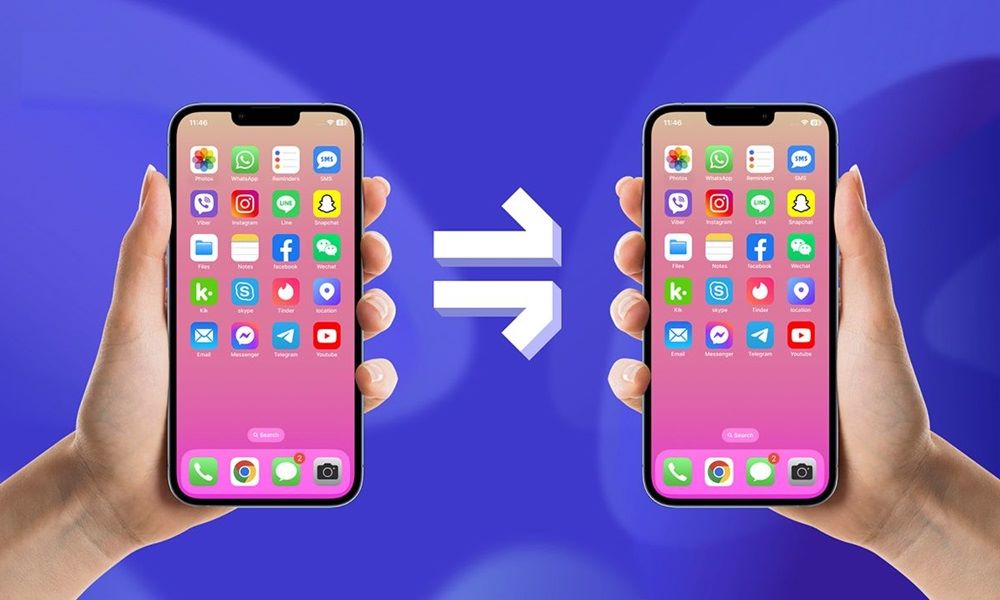
In this article, we'll explore how to clone mobile numbers, when it's legal to do so, and the 8 most practical methods you can use today.
Is It Legal to Clone a Mobile Number?
Cloning your own number for backup or monitoring a child's device is legal in many countries. But cloning someone else's number without permission is illegal and considered fraud.
Legal Use:
- Monitoring your child
- Using your number on multiple devices
- Corporate device management
Illegal Use:
- Identity theft
- Unauthorized surveillance
- Accessing banking OTPs or private messages
Always check your local laws before attempting to clone a mobile phone number.
How Does Mobile Number Cloning Work?

To clone a mobile number, the key step is duplicating SIM data like the IMSI (International Mobile Subscriber Identity) and Ki (authentication key). This data is used to validate you on the cellular network.
Cloning usually requires:
- A SIM card reader/writer
- Access to the original SIM card
- Specialized software or apps
GSM and CDMA phones handle cloning differently, but the concept remains the same: copy identity and replicate it elsewhere.
8 Proven Ways to Clone a Mobile Number
Here are eight proven methods people use to clone a mobile number. While some techniques are technical and complex, others rely on software or tools.
1. Use SafeMyKid: The Best Way to Clone Mobile Number

If you're looking for the safest and easiest way to clone a mobile number, your best bet is SafeMyKid.
SafeMyKid is not just a monitoring tool, it's a full parental control and phone tracking solution that effectively clones communication on mobile devices. It works silently in the background, giving you access to call logs, messages, and social media activity.
Why Use SafeMyKid to Clone Mobile Number?
When it comes to safely monitoring and protecting your loved ones, SafeMyKid offers powerful features that help you stay informed without resorting to illegal cloning methods. Instead of risky hacks, SafeMyKid provides secure, transparent ways to track and monitor.
SafeMyKid features to clone mobile numbers include:
- Real-time phone location tracking: Know the device's exact location at any time.
- Call and SMS monitoring: Access incoming and outgoing call logs and messages.
- Contact list monitoring: Review the contacts saved on the device.
- Message interception alerts: Detect unusual message activity or potential spoofing attempts.
- Stealth mode operation: Run discreetly without alerting the user.
- Geofencing: Set safe zones and receive alerts if the device moves outside them.
SafeMyKid prioritizes ethical monitoring, ensuring you protect your family without risking the legal or security issues tied to mobile number cloning.
How to Clone a Mobile Number Using SafeMyKid
If you want to monitor a mobile number safely and legally, SafeMyKid offers a smart alternative to risky cloning techniques. Here's how to get started on both Android and iPhone devices:
How to Clone a Mobile Number on Android
Step 1. Create an Account on SafeMyKid
Sign up on the official website to start the process.
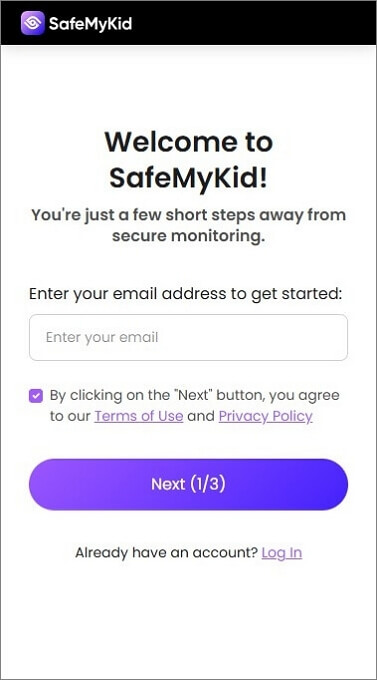
Step 2. Install SafeMyKid on The Target Android Device
Physical access is required briefly to install the app.
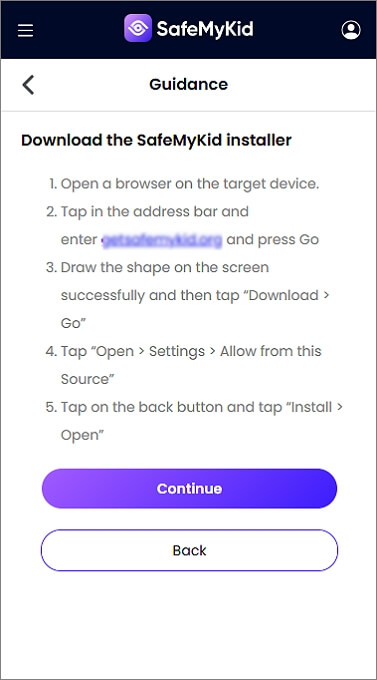
Step 3. Clone Mobile Number on Android
Once installed, you can monitor calls, messages, and all data linked to the mobile number.
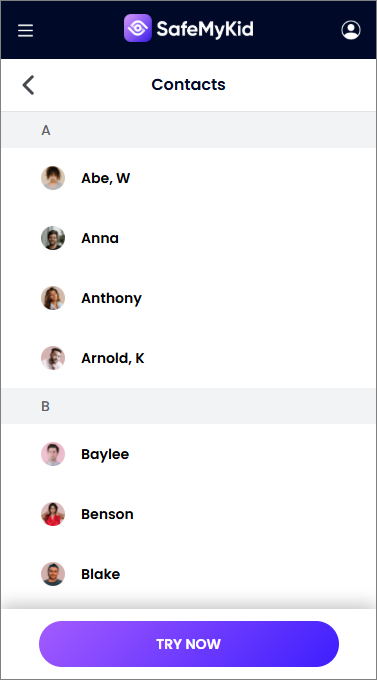
How to Clone a Mobile Number on iPhone
Step 1. Sign up
Register your account with SafeMyKid's platform.

Step 2. The iCloud Credentials of The Target Device
No physical installation is needed if you have the iCloud login info.
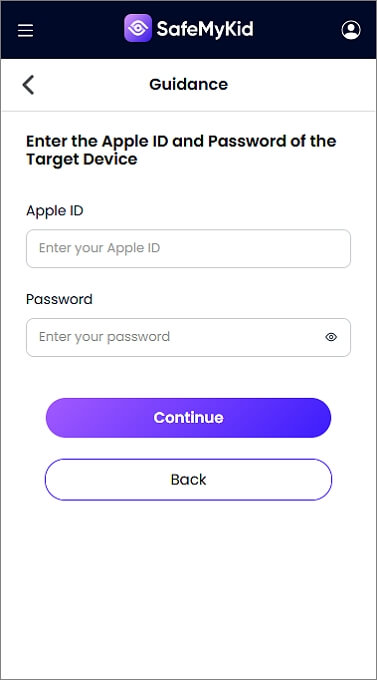
Step 3. The Mobile Number on iPhone
Begin to access real-time data to track call logs, messages, and phone activity linked to the number.

With SafeMyKid, you won't need to use risky tools or SIM cloning kits. It's the safest and most efficient method for a mobile number clone.
2. SIM Cloning Tools like MOBILedit
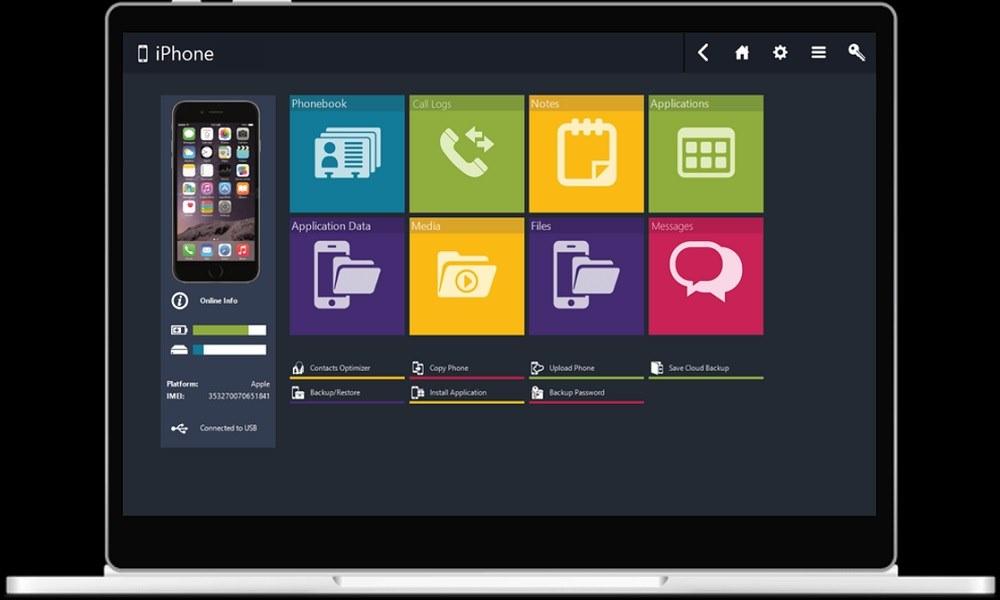
SIM cloning tools such as MOBILedit use specialized card readers to extract and clone the data stored on a SIM card. These tools are often used by forensic experts to recover information or replicate SIM cards for legal investigations.
However, they require physical access to the SIM card and some technical knowledge to operate the software correctly. This method is not user-friendly for casual users and involves hardware and software that can be expensive.
Pros:
- Can extract comprehensive SIM data
- Useful for forensic or professional purposes
Cons:
- Requires physical access to SIM card
- Not easy for non-technical users
3. Using a SIM Card Reader & Writer

A SIM card reader and writer is a programmable device that can copy data from one SIM card to another blank SIM. The process involves inserting the original SIM into the reader, extracting its data, and then writing it onto a new SIM card.
While this technique sounds straightforward, it is often illegal without the cardholder's consent and may fail with encrypted or newer SIM cards that have advanced security features.
Pros:
- Can create an exact SIM copy if encryption is bypassed
- Affordable and widely available devices
Cons:
- Illegal without explicit permission
- Doesn't work on encrypted or newer SIM cards
4. Phone Transfer Apps

Phone transfer applications like Tenorshare and Dr.Fone help transfer contacts, call logs, and messages between devices but do not clone the SIM card itself.
These apps are designed mainly for data migration rather than cloning a mobile number. They provide an easy and legal way to move information but don't replicate network authentication or SIM-based functionalities.
Pros:
- User-friendly and quick data transfer
- Legal and safe for personal use
Cons:
- Does not clone SIM card or mobile number functionality
- Limited to data transfer only
5. IMSI Catchers
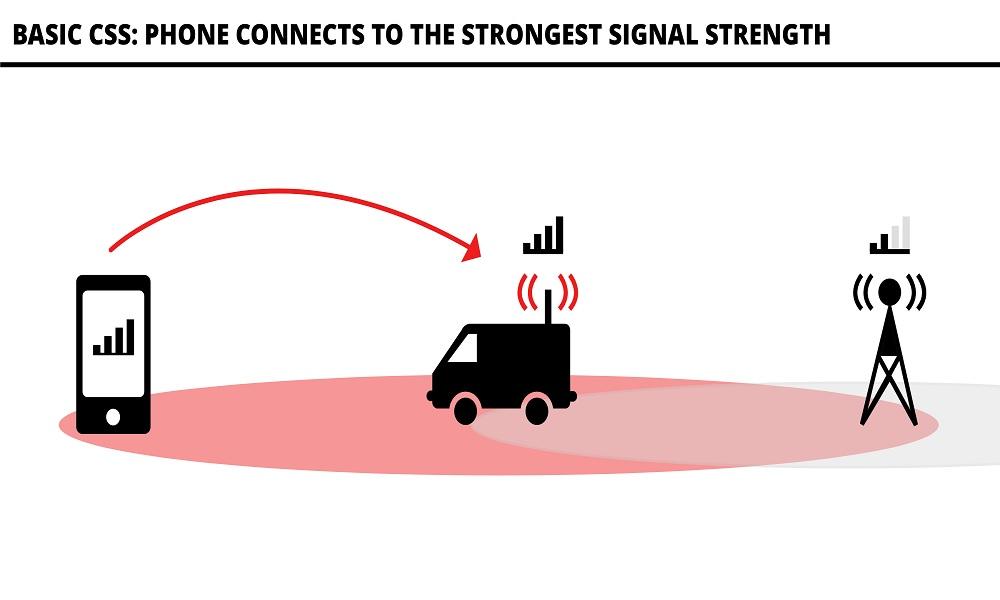
IMSI catchers are sophisticated surveillance devices that mimic cell towers to intercept mobile signals and capture IMSI (International Mobile Subscriber Identity) numbers, which can then be used to clone SIM cards.
These devices are typically used by law enforcement or intelligence agencies. Using IMSI catchers without authorization is illegal and punishable by law, plus the equipment is very costly.
Pros:
- Highly effective for capturing SIM credentials
- Used in professional surveillance
Cons:
- Illegal for civilian use
- Expensive and difficult to operate
6. Wireshark and Packet Sniffing

Advanced users may employ network packet sniffing tools like Wireshark to analyze mobile data traffic and potentially extract sensitive SIM-related information.
This method requires extensive technical skills and is illegal in many jurisdictions because it intercepts private communications without consent. Additionally, modern encryption makes this approach less practical.
Pros:
- Powerful network analysis tool
- Can provide detailed packet information
Cons:
- Illegal in many countries
- Highly technical and complex to use
7. Physical SIM Duplication
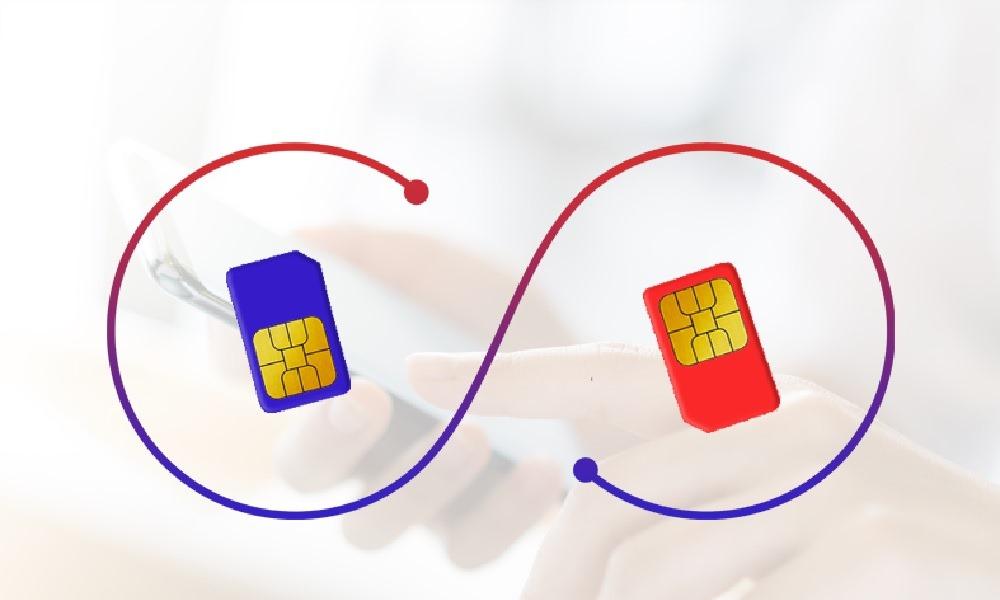
Physical SIM duplication involves using specialized cloning devices and software to copy the data stored on a SIM card directly.
This process is invasive and requires hardware such as SIM card duplicators. It may be blocked by encryption on newer SIM cards, and it raises significant legal and ethical concerns due to privacy violations.
Pros:
- Can produce near-exact SIM copies (if there is no encryption)
- Direct method for SIM cloning
Cons:
- Blocked by SIM encryption on newer cards
- Illegal and invasive method
8. SS7 Exploits
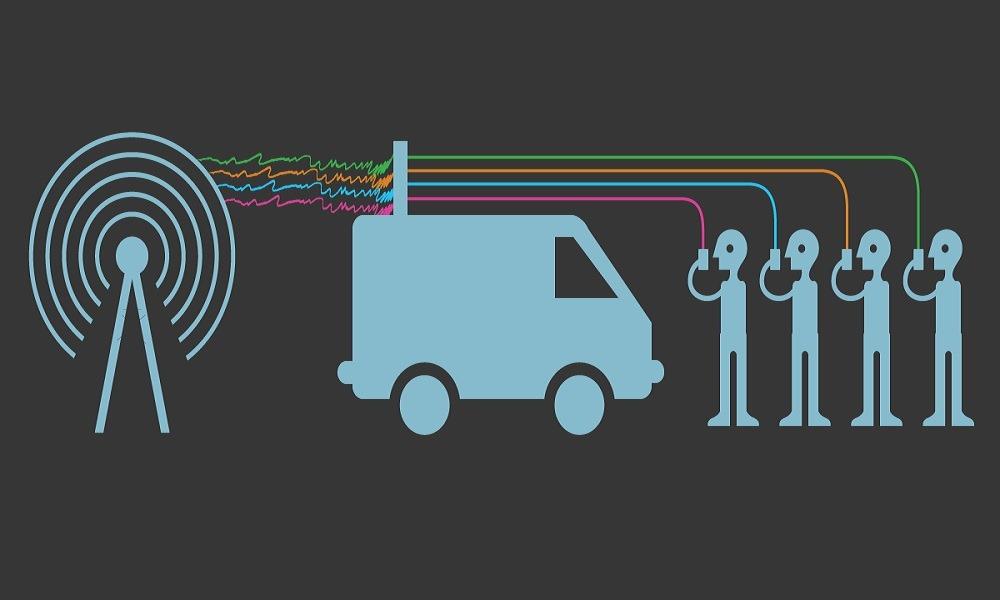
The SS7 (Signaling System 7) network protocol has vulnerabilities that hackers exploit to intercept SMS and call data, allowing for mobile number cloning or call rerouting.
This method targets weaknesses in the telecom infrastructure rather than the SIM card itself. SS7 exploits are complex, illegal, and very risky, requiring deep telecom knowledge and access.
Pros:
- Can intercept communications without physical access
- Exploits network vulnerabilities directly
Cons:
- Illegal and highly risky
- Difficult to perform without telecom expertise
Risks of Mobile Number Cloning

If a criminal clones your number, they could:
- Steal your identity using your cloned number
- They can intercept your private calls and text messages.
- Access to your two-factor authentication (2FA) codes becomes possible.
- Hackers may empty your bank accounts by stealing OTPs (One-Time Passwords).
- Cloning can lead to financial loss, privacy invasion, and reputational harm.
This is why safe, legal tools like SafeMyKid are critical when attempting to clone a mobile phone number.
How to Protect Yourself from Mobile Number Cloning
Here are some effective steps to protect yourself from mobile number cloning:
- Enable SIM PIN lock to add an extra layer of security against unauthorized use.
- Avoid sharing your SIM card or phone with others to reduce the risk of data theft.
- Regularly check for suspicious activities such as unusual call history or unexpected service interruptions.
- Report any signs of cloning or suspicious behavior to your mobile carrier immediately for swift action.
Security starts with awareness, so staying vigilant is your best defense against mobile number cloning.
FAQs about How to Clone a Mobile Number
Before we wrap up, you might still have a few lingering questions about the process and risks of trying to clone a mobile number. Here are some frequently asked questions to help clarify everything you need to know.
1. Is It Illegal to Clone a Mobile Number?
Yes, in many countries, cloning a mobile number without the owner's consent is illegal and considered a cybercrime. Unauthorized mobile number clone activities can lead to legal consequences, including fines and imprisonment.
However, parents and legal guardians may monitor their child's phone activity using legal tools like SafeMyKid, provided it's used ethically and within the law.
2. Can Mobile Number Cloning Be Detected by The Network Provider?
Yes, most network providers have systems to detect suspicious mobile number clone activity. If two devices are using the same number from different locations simultaneously, it may raise red flags, leading the provider to block the clone or alert the original user.
3. What are The Signs That Someone Has Cloned Your Mobile Number?
Signs include unexpected call logs, texts you didn't send, being locked out of accounts, or your phone losing network coverage randomly. If you suspect someone cloned your mobile number, immediately contact your mobile service provider and reset your SIM authentication.
4. Does SIM Swapping Count as Mobile Number Cloning?
SIM swapping is a form of mobile number clone that involves transferring your number to a new SIM card.
It's commonly used by hackers to bypass two-factor authentication. Unlike typical cloning, SIM swapping often relies on gaining access to your mobile account credentials.
5. Can You Clone a Mobile Number to Two Phones Simultaneously?
Technically yes, but only using certain third-party tools or software. These methods often require physical access to the target device or SIM. Legal tools like SafeMyKid provide an ethical way to monitor activity rather than fully clone a mobile number across two devices.
6. What's the Difference Between Phone Cloning and Number Cloning?
Phone cloning refers to duplicating the entire device's identity (IMEI, serial number, data), while mobile number cloning focuses solely on duplicating the SIM or phone number. Number cloning is often used to intercept calls or messages tied to that number.
7. Can a Cloned Mobile Number Be Used for Identity Theft?
Yes, unfortunately, cloning a mobile number can lead to identity theft. Hackers may use your number to access bank accounts, receive verification codes, or impersonate you. It's important to enable security features like two-factor authentication and use anti-spyware tools.
8. How Can I Protect Myself from Mobile Number Cloning?
To stay safe, avoid sharing your SIM or phone number on public forums, enable SIM lock features, and monitor your phone's behavior.
If you're worried about your child's safety, using a tool like SafeMyKid helps monitor activity securely without exposing you or them to the risks of number cloning.
Conclusion
There are legitimate reasons to clone a mobile number, like monitoring your child's activity or backing up important communication data.
In these cases, trusted tools like SafeMyKid offer a secure and responsible way to handle the process. Just remember, using shady or unauthorized methods can lead to serious legal trouble.




